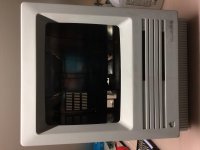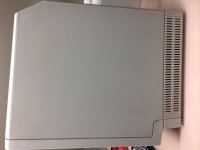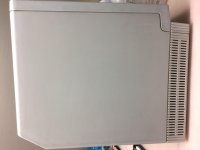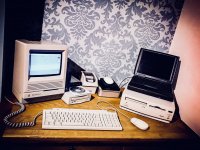davidg5678
Well-known member
I attempted to Retrobrite my Macintosh SE using the 8-Bit Guy's method of 40 volume developer and plastic wrap. (see here: https://youtu.be/VU7vXMezW_I) It failed miserably and left my entire Mac looking like a marble sculpture. During the process, I cleaned my computer thoroughly -first with a garden hose which I followed up by isopropyl alcohol. I was sure to massage the cream around every half hour while it sat in very bright sunlight for about 4 hours. It stayed this way for a few months until I tried fixing it with total submersion method recently shown by the 8-Bit Guy (https://youtu.be/qZYbchvSUDY) skip to 16:15. This time, I used 2 bottles (64 ounces) of peroxide to try and offset the massive difference in water that the 8-Bit Guy had for his Macintosh LC. The marble effect seemed to clear up when I was outside, and from its appearance, the computer looked normal. I rinsed off the water and peroxide and dried off the computer -only to see that there was no difference in the marbling. The surrounding plastic looked a tiny bit brighter, but the marbling is very visible. This was also outside for four hours.
Is there something I did wrong during the initial Retrobright process that caused my computer to look the way it does? Does anyone know what I can do to fix this issue? Was the second treatment not strong enough? Pictures of the disaster below:
Edit: Images added
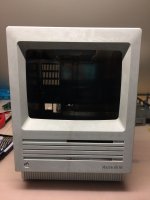
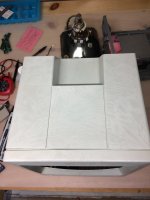

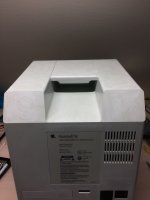

Is there something I did wrong during the initial Retrobright process that caused my computer to look the way it does? Does anyone know what I can do to fix this issue? Was the second treatment not strong enough? Pictures of the disaster below:
Edit: Images added





Last edited by a moderator:

